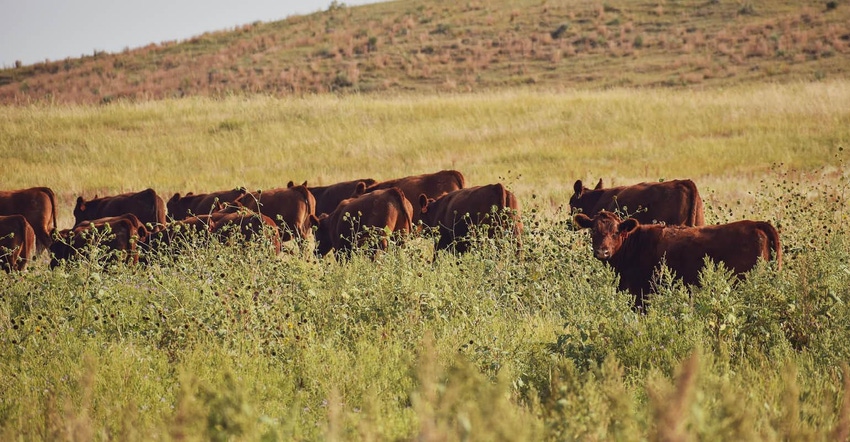
With Labor Day just around the corner, it is important to assess the current forage situation and evaluate the remaining potential of the growing season. The August 23 Drought Monitor shows that 98.64 percent of Oklahoma is in some stage of drought (D0-D4) with 48.60 percent in D3 (extreme) and D4 (exceptional) drought.
The USDA-NASS Crop Progress report for that same week showed Oklahoma pasture and range conditions to be 33 percent Very Poor, 36 percent Poor, 25 percent Fair, 6 percent Good and 0 percent Excellent.
Hay supplies in Oklahoma are similarly limited. May 1 hay stocks were down 47.8 percent year over year and were down 43.5 percent from the ten-year average (2012-2021). Total hay production in 2022 is estimated to be down 10.1 percent year over year and down 17.1 percent from the ten-year average. Other (non-alfalfa) hay makes up over 86 percent of Oklahoma hay production on average and is the primary hay for beef cattle production. Other hay production is projected to be down 14.7 percent year over year and down 19.3 percent from the ten-year average.
The total hay supply for the 2022-2023 hay crop year (May-April) is the sum of May 1 hay stocks and 2022 hay production. The total Oklahoma hay supply is projected to be down 17.2 percent from last year and down 21.7 percent from the 2012-2021 average. It will be the smallest total hay supply in the state since 2012.
Scattered rain has fallen in some parts of Oklahoma recently. This may provide a bit of additional pasture growth but is unlikely to produce much additional hay. Recent rain and any additional that might arrive soon may still be in time to help warm-season introduced and native grasses with some additional growth. Going forward, additional moisture will likely be most beneficial to cool-season forages.
The question of wheat pasture potential is always important in the southern plains this time of year. Wheat planted for forage only or dual-purpose grazing and grain is typically planted in September. A few places in the state may have sufficient topsoil moisture from recent rains to think about planting wheat soon but soil moisture does not extend very deep in the majority of the state. Prompt and timely rain will be needed for fall wheat forage production.
If wheat pasture does become available, it may be used somewhat differently than usual this fall and winter. Given the limited hay supply, proportionally more wheat pasture is likely to be used for cow herds than for stocker production. Even if there is wheat pasture, stocker demand may be somewhat lighter than usual this year.
However, the fall run of calves may also be smaller than usual. In the past seven weeks, the Oklahoma combined auction total for feeder cattle has been up 13.6 percent year over year as feeder cattle have been marketed earlier than usual. Additionally, the auction volume of cull cows has been up 108.1 percent year over year in the same period as producers continue to adjust cow herds to match the limited forage supplies available for fall and winter.
Source: Derrell Peel, who is solely responsible for the information provided and is wholly owned by the source. Informa Business Media and all its subsidiaries are not responsible for any of the content contained in this information asset.
About the Author(s)
You May Also Like




